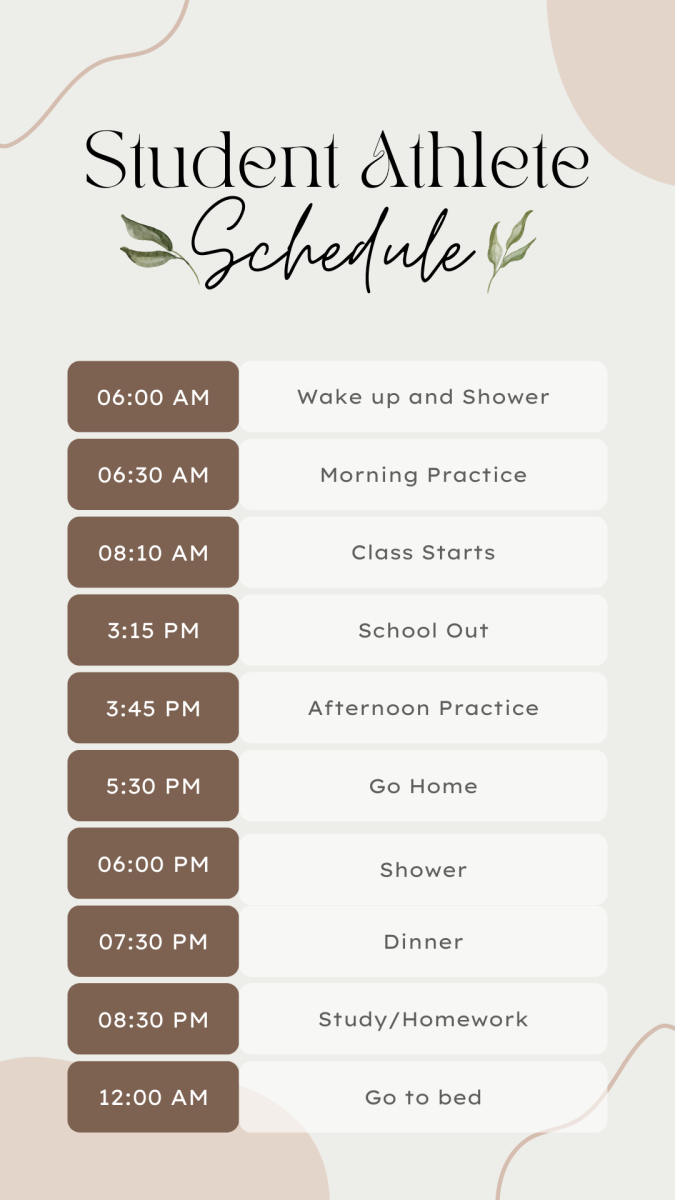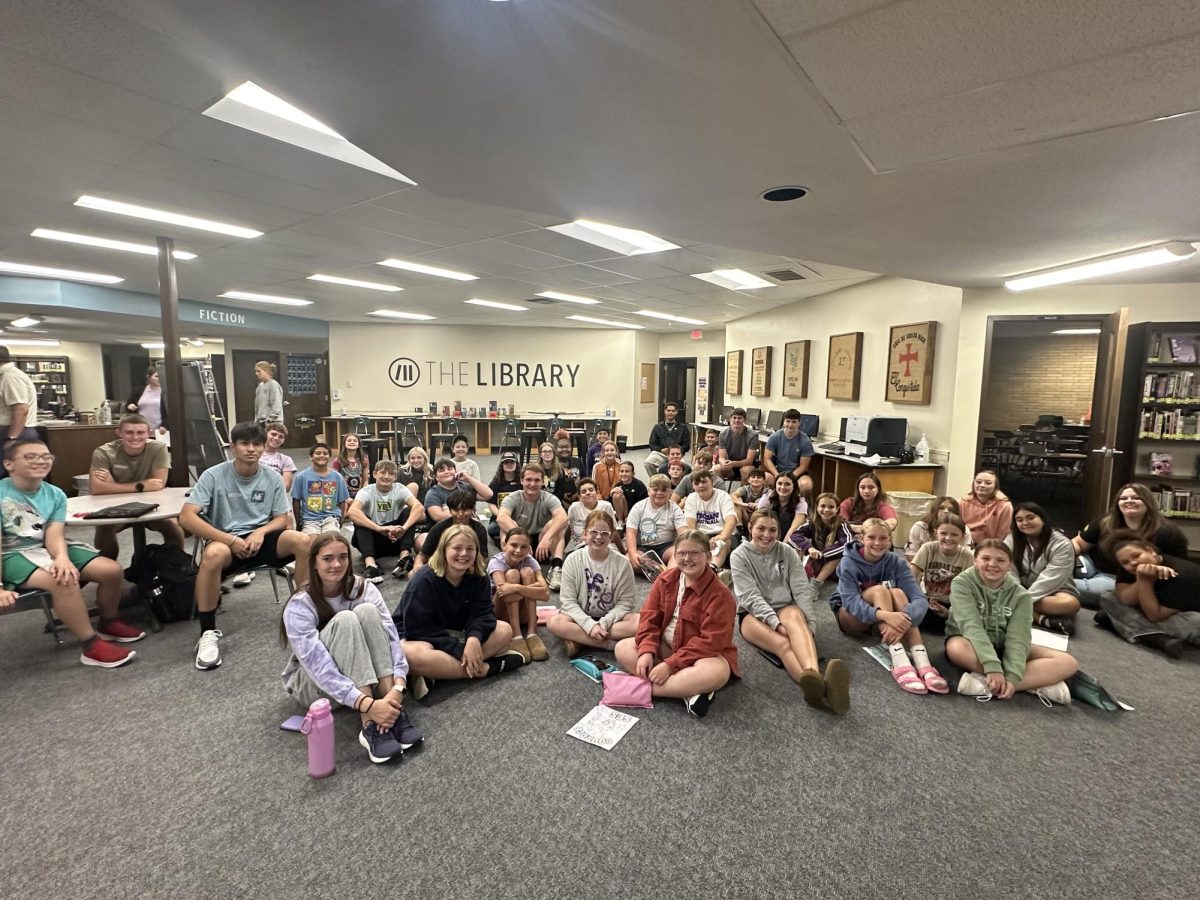Looking around, it’s not hard to see the amount of students who are very obviously struggling mentally. From the observer’s perspective, it’s hard to tell what people our age are grappling with. Many of us can take a pretty good guess though. Students are stressed, depressed, and burnt out. For many of us, it’s hard to put it into words how we feel. And while school may not be the leading cause of your struggles, for many, school is the main suspect. Considering the fact that we are from small town Kansas, sometimes larger statistics can feel exaggerated and extreme. But when we take those overall stats and compare them to the information we can gather from around us, it becomes clear that those large and extreme statistics aren’t as far off as we originally thought.
Many researchers use statistics they find from trusted online sources, which is great, and there is nothing wrong with that. Yet when it comes to these large statistics sometimes they feel exaggerated and unrealistic. This is why it is most wise to use both local and national statistics to show a level of relatability and understanding. When researching statistics online, Crossriver Therapy stated that among highschool students 40% of teenagers admit to feeling irritable or having feelings of anger, yet 36% of them felt anxiety or nervousness (Crossriver Therapy). Another 36% felt tiredness or fatigue during classes and 31% exhibited feelings of overall stress. On a similar note that same website said that there were 15.7% of American high school students that are victims of cyberbullying. While this statistic specifically is from 2018 and 2019, I can suspect that the roughly 16% of students are among the 31% of students who experience overall stress in school. Bullying, both in person and online, is an act that causes not only feelings of self worthlessness, but a constant stress that affects how some people function on a daily basis. It’s said that female students are twice as likely to experience bullying than their male counterparts, and that at least 20% of female students admitted to being bullied online (Crossriver Therapy). I am aware that a lot of people have been desensitized to the constant talk about ending bullying, mainly because of hearing the same information and things being said every time, and in turn have lost a lot of interest in the matter, but to try and put it into perspective of how dangerous bullying can be a study shows that out of 41 school shooting suspects, 46% of them were victims of bullying at school or online (Crossriver Therapy). The fact that there has even been that many school shooters in recent years, and that so many of them were motivated by bullying is devastating. Bullying is directly correlated with depression in high school and middle school. Recent research shows that bullying was a major factor in the increase in teen suicides when students returned to in-person school after online learning during the pandemic. LGBTQ, Asian, Black, and multiracial students report the highest levels of bullying and poor treatment in school, according to the CDC’s Adolescent Behaviors and Experiences Survey.
In addition to the stresses from bullying, I also found that Newport Academy claimed that between homework, extracurricular activities, socializing, and after-school jobs, high school students don’t have enough time to relax and replenish. This can lead to burnout, sleep deprivation, and not enough time spent with family. Also, many teens experience some degree of academic pressure. And an uncertain economy and tough competition for college and graduate school make that pressure worse. For some students, academic pressure triggers perfectionism, which can have a negative impact on teen well-being. Teen sports can also create pressure and expectations that contribute to high school depression. It isn’t hard to see that with a combination of all these pressures, derived directly from school and school related activities, that students are stressed, and burnt out, and spread way too thin.
Why is it that today’s teens seem so much more overwhelmed then students of past generations? Some studies show that children today have a lack of coping skills. Today’s teens are more protected than in the past. Parents try to shield them from experiencing failure and disappointment. Therefore, teens often have fewer chances to build resilience. Thus, they don’t learn how to cope with challenges. The same study stated that 16 percent of US teens (ages 12 to 17)—more than 4 million adolescents—had at least one major depressive episode in 2022 (Newport Academy). In addition, 11.5 percent of US youth (over 2.7 million high school students) are experiencing major depressive disorder with severe impairment. Three in five teens with depression received no mental health treatment. In some states, three-quarters of high school students with depression did not receive mental health services. Even teens who did access care rarely received consistent treatment. On average, fewer than one in three adolescents with severe depression received consistent care (Newport Academy). I think that personally, parents should shield their children from the dangers of our world, but not necessarily disappointment. I feel like parents are constantly trying to fix every little thing that upsets their children during childhood, which in theory doesn’t seem like a bad thing. However, when that child grows up a bit and is then unable to cope and understand that disappointment is inevitable and isn’t always something bad. In addition, teens with depression and who struggle with those same coping issues aren’t able to get the constant help they need in order to grow into a stable adult. Both in real therapy and school counselors, students either lack access to that help or feel that those supposed trust adults aren’t as trustworthy as they should be. This fact in itself is another reason why schools and adults in general are setting the upcoming generation up for failure in adulthood. Mental health is something everyone should take seriously, and everyone should have trusted access to affordable mental healthcare.
After reading these statistics and taking in what they really mean, it made me wonder how they look in comparison to how our Southeast of Saline students feel. I chose to do some research of my own and find out if these feelings translated to our rural communities. I tried to interview students from a variety of different grades and involvements, sometimes this proved to be a bit difficult in a crunch for time. Of course the main area of students that I wanted information from was student athletes. I found that for students who are actively participating in sports almost all year round; have practice all week, and sometimes on the weekends depending on whether or not there is a game or meet early in the next week. Each practice usually lasts around two hours during the week, and on the weekends, practices are shorter. I have found that many of our coaches have a lot of respect for our athletes’ spare time, which I greatly appreciate. Heavy conditioning and weights usually come at the beginning of the season or during the summer. While the times that students wake up and get home is going to be different depending on who you are, where you live, and what you have to do, a lot of students are getting up between 6:00 and 6:30 a.m. Student athletes tend to get home later at around 6:30, while students who aren’t in sports are returning home at around 4:30. Students say that not very many of their weekends are constantly taken up, and if they are, it isn’t for very long, giving them time to rest and recharge after a long week. Our athletes claim that keeping up on work and retrieving information they might’ve missed doesn’t usually prove to be an issue, as our students are aware of the fact that school comes before sports.
Depending on who you are, the way sports and school can affect both your mental health and the relationships you have can vary greatly. It also depends on how much you actually enjoy the sport you play. If you chose to join a team because a friend was or just because you wanted to, I fear that it leaves you at a greater risk to become overwhelmed and dread the sport. If you truly enjoy being a part of the team and playing, I think you might find a more calming and peaceful environment when participating in sports. In the same way, some students claim that their sport and school work has a negative affect on their relationship with their friends and family, or even their romantic partner, while others claim that it has a tendency to bring them closer together.
Highschool is the prime time for students to figure out what they want to do later in life and fresh out of school. In my own personal experience, I have found that I feel a lot of pressure to go to college right away after I graduate. I don’t mind horribly, as I plan to go to college anyways, but I feel upset often, considering the fact that I don’t know what I want to do or where I want to go. Some students feel the same, yet others don’t feel much pressure at all. Many students have their own plans for college whether or not they go right away or take some time for themselves after highschool. Being able to go to college takes a lot of work, especially as you get into junior and senior year of high school. More schoolwork and a constant rush and cause feelings of anxiety and dread for the future. Taking time to study each week, students find different ways and times to get their extra work done. Whether they take an hour or two at the end of the week, or use the free time they have while in school, students don’t usually like to take too much of their personal time, so they find ways around that. Almost unanimously, students all agree that the schoolwork tends to cause a considerable amount of stress. But, it tends to come in waves. It is never a constant stressor, but it is most definitely something that comes and goes. While it was somewhat surprising to me, the thought of dropping out or going online is not a common thought or consideration among high school students, whether it be just something they’ve never thought about or something they know they wouldn’t do well with.
I gained a lot of information from the students I interviewed. I wish I could’ve asked more people, though. I don’t think I can make a proper analysis with the information I have. I think every student is different and has different views on how the school treats them. I think this is most definitely a topic I would come back to if I had more time, but I think that currently I dont have the answers I would like. Everybody is so incredibly different and comes from even more unique backgrounds and it isn’t fair for me to interview a few people and come to a complete conclusion about how students feel about such a broad topic. No matter how you feel walking into school each day, no matter how you feel about each teacher you sit in front of, or about how important each class is, your thoughts and opinions are entirely valid and important. There are many places in our country where students don’t feel safe or comfortable while in school. We are extremely fortunate that for the most part, our community is not like that.
Works Cited
“Adolescent Depression in Schools: Main Cause of Mental Health Issues.” Newport Academy, 17 January 2023, https://www.newportacademy.com/resources/mental-health/adolescent-depression-in-schools/. Accessed 7 February 2024.
zauderer, steven. “47 Student Stress Statistics (High School/College).” Cross River Therapy, Steven Zauderer, 19 September 2023, https://www.crossrivertherapy.com/student-stress-statistics. Accessed 7 February 2024.










